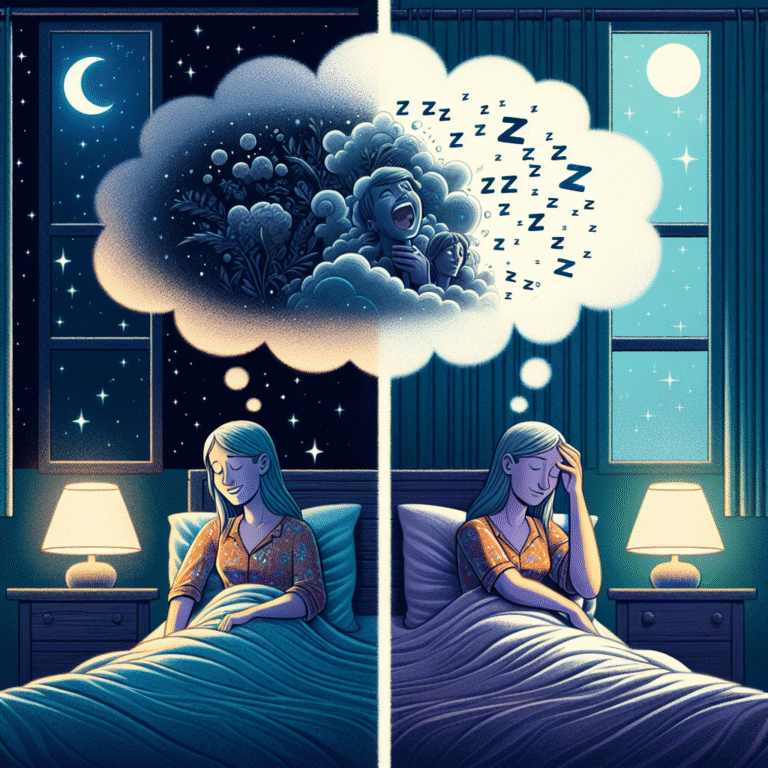
From Routine to Restoration: How Sleep Hygiene Can Improve Your Life
Introduction
In our fast-paced, modern world, sleep often takes a backseat to our myriad responsibilities and distractions. Yet, sleep is more than just a nightly necessity; it is a cornerstone of physical health, emotional well-being, and cognitive function. Understanding the concept of sleep hygiene is critical in transforming our nightly rituals from mundane routines into restorative practices. This article will explore how sound sleep hygiene can enhance your life, guiding you from routine to restoration.
The Importance of Sleep Hygiene
Sleep hygiene encompasses the practices and habits that collectively contribute to a healthy night’s sleep. It is essential for ensuring that sleep is productive and restorative, allowing you to wake up feeling rejuvenated. When we regard sleep not as a mere formality but as an essential element for overall well-being, we begin to recognize the profound impact of effective sleep hygiene.
Why Sleep Matters
Sleep is crucial for various bodily processes. It facilitates memory consolidation, emotional regulation, and physical restoration. According to the National Sleep Foundation, adults require between 7 to 9 hours of sleep per night for optimal health. Lack of sleep can lead to numerous physical and mental health issues, including anxiety, depression, obesity, and chronic diseases.
Understanding Sleep Hygiene
Defining Sleep Hygiene
Sleep hygiene refers to a series of behaviors and environmental conditions that help prime the body and mind for restorative sleep. From maintaining a consistent sleep schedule to creating a tranquil sleep environment, these practices build the foundation for better sleep quality.
Elements of Good Sleep Hygiene
Sleep Schedule: Going to bed and waking up at the same time daily helps regulate your body’s internal clock.
Sleep Environment: A cool, dark, and quiet room enhances sleep quality. Consider investing in blackout curtains, earplugs, or a white noise machine.
Pre-Sleep Rituals: Establishing calming pre-sleep rituals such as reading, meditation, or gentle stretches can signal your body that it’s time to wind down.
Limit Screen Time: Blue light from screens can disrupt melatonin production. Aim to unplug at least an hour before bedtime.
- Diet and Exercise: A balanced diet and regular physical activity can contribute significantly to sleep quality.
Case Studies on Sleep Hygiene
Learning from real-world applications can offer invaluable insights into sleep hygiene. Below are two compelling case studies that highlight the transformation possible through improved sleep practices.
Case Study 1: The Impacts of Sleep Hygiene in the Workplace
Background: A medium-sized tech company noticed a decline in employee productivity and morale.
Implementation: They introduced structured workshops on sleep hygiene, encouraging employees to adopt consistent sleep schedules and create healthier sleep environments.
Results: After three months, 80% of participants reported improved sleep quality and a noticeable increase in workplace productivity. Employees found overwhelming benefits in creativity, focus, and communication.
Analysis: This case emphasizes the far-reaching effects of sleep hygiene, not just on individual health but also on organizational performance.
Case Study 2: Transforming Sleep in Adolescents
Background: A high school in a suburban district observed a spike in mental health issues and academic decline among students.
Implementation: Following a review of current sleep habits, the school introduced initiatives focusing on sleep hygiene education, including seminars and a later school start time.
Results: The students showed improved academic performance, reduced fatigue, and lower rates of anxiety within one semester.
Analysis: This study highlights how addressing sleep hygiene in educational settings can catalyze significant improvements in mental health and academic success.
Creating Your Sleep Hygiene Plan
Step-by-Step Guide
Transforming your sleep habits requires commitment and effort. Here’s a step-by-step guide to help you create your sleep hygiene plan.
Step 1: Assess Your Current Sleep Habits
- Track your sleep patterns for at least a week.
- Identify factors that disrupt your sleep, such as caffeine intake or stress levels.
Step 2: Set a Consistent Sleep Schedule
- Choose a realistic bedtime and wake-up time.
- Aim for 7-9 hours of sleep consistently.
Step 3: Design Your Sleep Environment
- Invest in quality bedding and pillows.
- Ensure your room is dark, cool, and quiet.
Step 4: Develop a Relaxing Pre-Sleep Routine
- Engage in relaxing activities like reading or light stretching.
- Avoid screens for at least an hour before bedtime.
Step 5: Monitor Progress and Adjust
- Reassess your sleep quality every few weeks.
- Make adjustments as needed.
The Science Behind Sleep Hygiene
Understanding the science behind sleep hygiene deepens our appreciation of its importance. Hormones such as melatonin play pivotal roles in regulating sleep cycles. Factors such as stress, diet, and physical activity directly influence the body’s production of melatonin and other essential sleep-related hormones.
The Role of Circadian Rhythms
The human body operates on a circadian rhythm, an internal clock that regulates sleep-wake cycles. Disrupting this rhythm—through irregular sleep patterns, shift work, or excessive screen time—can lead to sleep disorders and chronic fatigue. Practicing good sleep hygiene aligns daily activities with the natural circadian rhythm, optimizing sleep quality.
The Connection Between Sleep and Mental Health
Quality sleep directly impacts mental health. People who practice good sleep hygiene are less likely to experience anxiety and depression. Adequate sleep improves resilience to stress and enhances overall emotional regulation, making it an essential component of mental wellness.
Summary of Key Points
- Understanding Sleep Hygiene: Essential for improving sleep quality and overall health.
- Real-World Applications: Case studies show the broad impact of implementing sleep hygiene in various environments.
- Creating a Plan: A structured approach to assessing, scheduling, designing, and monitoring sleep habits can lead to substantial improvements in life quality.
Conclusion
Transitioning from routine to restoration requires conscious effort and commitment to sleep hygiene. By prioritizing effective sleep practices, you not only enhance your sleep quality but also improve your mental and physical health, productivity, and overall quality of life. The journey towards better sleep is a transformative process—one that can lead you to rediscover vitality and wellness. Begin today; your journey toward restoration starts with a simple, committed choice toward better sleep.
FAQs
1. What are the most common sleep hygiene practices?
Common practices include maintaining a consistent sleep schedule, creating a relaxing bedtime routine, limiting screen time, and optimizing your sleep environment.
2. How long does it take to notice the benefits of improved sleep hygiene?
Many people notice improvements in sleep quality within a couple of weeks of implementing better sleep hygiene practices.
3. Can diet affect sleep quality?
Yes, consuming a balanced diet and avoiding heavy meals, caffeine, and alcohol close to bedtime can significantly impact your sleep quality.
4. Should I exercise before bed?
While moderate exercise can improve sleep quality, it is best to avoid vigorous workouts close to bedtime, as they may hinder your ability to fall asleep.
5. What should I do if I can’t sleep?
If you find yourself unable to sleep, get out of bed and engage in a relaxing activity until you feel sleepy. Avoid turning on bright lights or screens.
Transform your relationship with sleep by embracing these strategies and insights. From routine to restoration, a good night’s sleep awaits you!
















